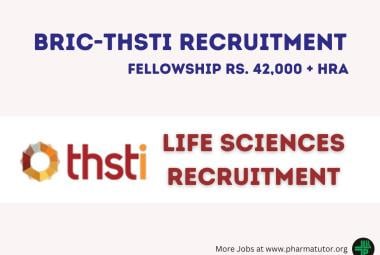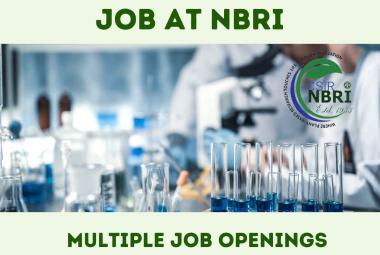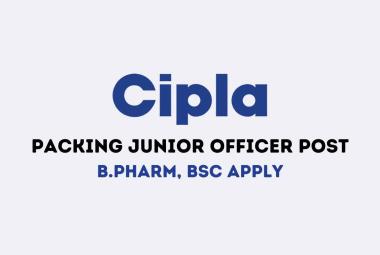ABOUT AUTHORS:
Dr. Amit Gupta, Chirag Sudani*, Hashesh katheriya, Shifalee magazine, Mayur Pansuriya
Mahatma Gandhi College of Pharmaceutical Sciences, Jaipur.
*patel_chirag75@yahoo.com
ABSTRACT:
Water purification systems must be validated to insure that the specified quality of water is consistently produced for use of all purpose as well as formulation, production, analysis, drinking cleaning and to solve the problems arising in the purification system.In present scenario the quality of pharmaceutical water is maintained by setting a good pharmaceutical water system and this system encompasses qualification, attention of the regulatory requirements which are updated time to time. Validation of water treatment systems is necessary to obtain water with all desired quality attributes. This also provides a framework to establish a total control over the process which monitors safety, efficacy and ultimately, the process outcomes.
REFERENCE ID: PHARMATUTOR-ART-1839
INTRODUCTION
Water is one of the most widely used substances, and raw material, or an ingredient in the production, processing, and formulation of pharmaceuticals and hence, plays a pivotal role in pharmaceutical processing. Every industrial or pharmaceutical plant related to health products must rely on appropriate water purification systems, allowing it to meet its particular requirements, especially as to the problems related to storage and internal distribution. Purified water is obtained from drinking water through a typical water purification system of unit operations. United States Pharmacopoeia (USP) describes several grades of this raw material (i.e., water), based on various quality parameters such as conductivity, total organic carbon (TOC), microbiological values, and presence of contaminants including endotoxins, nitrates and heavy metals. Water must be continuously tested and should comply with well defined quality attributes.
Validation of water treatment systems is mandatory to obtain water with all the desired quality characteristics. This article is intended to discuss the effectiveness, consistency and reproducibility of a water treatment system along with its validation aspects. [1, 2]
WATER FOR PHARMACEUTICAL PURPOSES
Grades of water specified in the compendia (USP) are classified according to the quality attributes as:
- Portable water
- Purified water
- Water for injection
- Sterile water for injection
- Sterile water for inhalation
- Sterile water for irrigation
- Sterile bacteriostatic water for injection
The quality attributes of water for a particular application are dictated by the requirement of its usage. Sequential steps that are used for treating water for different pharmaceutical purposes include:
- Softening
- Dechlorination
- Deionization
- Reverse Osmosis
- Ultra filtration
- Distillation
|
Table 1: Specified limits for purified water and water for injection |
||
|
PARAMETER |
PURIFIED WATER |
WATER FOR INJECTON |
|
Conductivity |
< 1.3 μs/cm at 25 °C |
< 1.3 μs/cm at 25 °C |
|
PH |
5.0-7.0 |
5.0-7.0 |
|
Bacteria |
< 100 cfu*/ml |
< 10 cfu/100ml |
|
Total Organic Carbone |
< 500 ppb** |
< 500 ppb |
|
Endotoxins |
-- |
< 0.25 EU***/ml |
EU*** = endotoxin units; cfu* = colony forming units; ppb** = parts per billions[3, 5]
VALIDATION AND ITS APPROACHES
Validation is the procedure for acquiring and documenting substantiation to a high level of assurance that a specific process will consistently produce a product conforming to an established set of quality attributes. The validation defines the critical process parameters and their operating ranges.
These principles are as follows:
- Quality, safety and efficacy must be designed and built into the product.
- Quality cannot be inspected or tested into the product.
- Each critical step of the manufacturing process must be validated. Other steps in the process must be under control to maximize the probability that the finished product consistently and predictably meets all quality and design specifications.
A validation program qualifies the design, installation, operation and performance of equipment.
There are two basic approaches to validation:
1. One based on evidence obtained through testing:
- Prospective and
- Concurrent validation
2. One based on the analysis of accumulated (historical) data:
- Retrospective validation
Whenever possible, prospective validation is preferred. Retrospective validation is no longer encouraged. [4, 5, 8]
QUALIFICATION OF SYSTEMS AND EQUIPMENT
Action of proving and documenting that any premises, systems and equipment are properly installed, and/or work correctly and lead to the expected results. Qualification is often a part (the initial stage) of validation, but the individual qualification steps alone do not constitute process validation.
PRINCIPLE OF QUALIFICATION
· Systems and equipment should be appropriately designed, located, installed, operated and maintained to suit their intended purpose.
· Critical systems, i.e. those whose consistent performance may have an impact on the quality of products, should be qualified. These may include, where appropriate, water purification systems, air-handling systems, compressed air systems and steam systems.
· The continued suitable performance of equipment is important to ensure batch-to-batch consistency. Critical equipment should therefore be qualified. [6, 7]
EQUIPMENT VALIDATION AND QUALIFICATION STAGES
Validation of water treatment systems follows the same basic sequence as does the validation of other pharmaceutical manufacturing equipment. It is necessary that the system should be checked and certified as properly installed, equipped and properly functioning as per its design.
Table 2: Summary of components employed in water treatment systems and their desired features / functions
|
Component |
Desired features/functions |
|
Pipings |
Selected material: stainless steel; should be designed for reliability, pressure control, nullifying presence of extractable contaminants. |
|
Holding Tanks |
Optimal size/capacity: 2000-4000 gallons, Hydrophobic air filters: restrict entrance of microbes in tanks. |
|
Valves |
Generally used types: Gate, Ball, Butterfly and Diaphragm. |
|
Filters |
Removes undissolved solids and bacterial contaminants, Control measures: Pressure and low flow monitoring, back washing, sanitizing, replacing filter media etc. |
|
Deionizers and Reverse Osmosis |
Removes dissolved solids, resins must be periodically regenerated. |
|
Carbon Beds |
Removes organic chlorine compounds and low molecular weight carbon compounds, required design features: selection of proper particle size, avoidance of hydraulic channeling etc. |
|
UV Lights |
Biocidal wavelength: 254 nm; UV dose variables: lamp intensity, residence time distribution and water transmittance should be properly measured. |
|
Distillation Still |
Deactivates bacterial endotoxins and removes dissolved solids not otherwise removed by RO units and deionizers. |
|
Ozone and Heat Sterilants |
Strong oxidizing agent, effective at low concentration. Both are used as biocidal. |
STAGES OF QUALIFICATION
There are four stages of qualification:
- Design qualification (DQ);
- Installation qualification (IQ);
- Operational qualification (OQ); and
- Performance qualification (PQ).
A. DESIGN QUALIFICATION
Design qualification should provide documented evidence that the design specifications were met. This is 1st step in the qualification of water purification systems.It is documented the design of the system & will include:
- Functional Specification. (Purification, Storage, etc).
- Technical/Performance specification for equipment. (Requirements of water volume and flow, define pumps and pipe sizes).
- Detailed layout of the system.
Design must be in compliance with GMPs and other regulatory requirements.
B. INSTALLATION QUALIFICATION
Systems and equipment should be correctly installed in accordance with an installation plan and installation qualification protocol. It should include
- Installation qualification should include identification and verification of all system elements, parts, services, controls, gauges and other components.
- Measuring, control and indicating devices should be calibrated against appropriate national or international standards, which are traceable.
- There should be documented records for the installation (installation qualification report) to indicate the satisfactoriness of the installation, which should include the details of the supplier and manufacturer, system or equipment name, model and serial number, date of installation, spare parts, relevant procedures and certificates.
C. OPERATIONAL QUALIFICATION
Operational qualification should provide documented evidence that utilities, systems or equipment and all its components operate in accordance with operational specifications. Tests should be designed to demonstrate satisfactory operation over the normal operating range as well as at the limits of its operating conditions (including worst case conditions).
Operation controls, alarms, switches, displays and other operational components should be tested. This process not only corrects the operation of a system, but also assesses the adequacy of Standard Operating Procedures (SOPs).
D. PERFORMANCE QUALIFICATION
Performance qualification should provide documented evidence that utilities, systems or equipment and all its components can consistently perform in accordance with the specifications under routine use. Test results should be collected over a suitable period of time to prove consistency.The major objective of this step is to demonstrate that the system produces and maintains recirculating water, which meets the compendial requirements for purified water over a suitable time period. [8, 9, 10, 11, 12, 14]
QUALIFICATION PHASES IN VALIDATION
To complete the validation of water treatment systems, it requires as long as one year because of operating problems, equipment failures and maintenance errors expected to occur during the validation period. Also, it takes one complete year to determine the seasonal variation in the microbiology of feed water as well as to demonstrate the effectiveness of system sanitization procedures against resident organisms. Successful and complete validation programme of water treatment systems can also be categorized into various phases:
PHASE 1 (Investigational Phase)
Carried out for 2 – 4 weeks should be spent monitoring the system intensively. During this period the system should operate continuously without failure or performance deviation.
- The following procedures should be included in the testing approach.
- Undertake chemical and microbiological testing in accordance with a defined plan.
- Sample the incoming feed-water to verify its quality.
- Sample after each step in the purification process daily.
- Sample at each point of use and at other defined sampling points daily.
- Develop appropriate operating ranges.
- Develop and finalize operating, cleaning, sanitizing and maintenance procedures.
- Demonstrate production and delivery of product water of the required quality and quantity.
- Use and refine the standard operating procedures (SOPs) for operation, maintenance, sanitization and troubleshooting.
- Verify provisional alert and action levels.
- Develop and refine the test-failure procedure.
PHASE-2(verifying control)
Carried out for 4-5 weeks should be spent carrying out further intensive monitoring while deploying all the refined SOPs after the satisfactory completion of phase 1. The sampling scheme should be generally the same as in phase 1. Water can be used for manufacturing purposes during this phase.
The approach should also:
- Demonstrate consistent operation within established ranges; and
- Demonstrate consistent production and delivery of water of the required quantity and quality when the system is operated in accordance with the SOPs.
PHASE 3(verifying long-term control)
Phase 3 typically runs for one year after the satisfactory completion of phase 2. Water can be used for manufacturing purpose during this phase which has the following objectives and features:
- Demonstrate extended reliable performance.
- Ensure that seasonal variations are evaluated.
- The sample locations, sampling frequencies and test should be reduced to the normal routine pattern based on established procedures proven during phase 1 and 2.
- After completion of phase 3 of the qualification program of water system, a routine plan should be established based on results of phase 3. [12, 13, 15, 16, 18]
CHANGE CONTROL
Changes should be controlled in accordance with a SOP as changes may have an impact on a qualified utility, system or piece of equipment, and a validated process and/or procedure. The procedure should describe the actions to be taken, including the need for and extent of qualification or validation to be done. Changes should be formally requested, documented and approved before implementation. Records should be maintained.
REVALIDATION
Revalidation should be performed only when there has been a significant change to the system or to the operational parameters. Routine monitoring and inspection will continue under the same condition as those that existed during the original validation. Routine maintenance or replacement of parts should have a specific written procedure, which must be validated at the time of original validation. [16, 17, 18]
CONCLUSION
Water treatment systems must be operated within regulatory guidelines as with pharmaceutical production facilities. To validate these systems, there must be documented evidence that the system is operating consistently and according to the desired specifications. Validation is a tool for total quality management and it is necessary for process optimization, safety, efficacy and assurance of quality. Such validation protocols also fulfill regulatory requirements and provide good business sense. Successful accomplishment of validation is ensured by various testing phases. Usually, a three-phase testing approach is recommended over an extended period to prove reliability and robustness of the system for producing water of specified quality with a high degree of assurance.
REFERENCES
1.Quality Assurance Guide, Third Edition - 1996, Volume I, Organization of Pharmaceutical Producer of India (OPPI).
2.Nash R. A., Validation of pharmaceutical processes. In: Swarbrick J, Boylan JC (Eds). Encyclopedia of Pharmaceutical Technology. 2nd ed. New York: Marcel Dekker, 2002; pp.2917-2931.
3.The United States Pharmacopoeia, USP XXII/The National Formulary, NF XVII, 1990, United States Pharmacopeial Convention, 12601 Twinbrook Parkway, Rockville.
4.Fedrick J. Carleton, James P. Agallow, Validation of Aseptic Pharmaceutical Process, Water System Validation, New York: Marcel Dekker, p. 212 – 244
5.Food and Drug Administration, Guideline on general principles of process validation. FDA, Rockville, MD 1984.
6.Nash R. A, Alfred H. Wachter, Pharmaceutical Process Validation, A International Third Edition, Revised and Expanded, Marcel Dekker, p. 401 – 422.
7.Syed Imtiaz Haider, Pharmaceutical Master Validation Plan, A Ultimate Guide to FDA, GMP & GLP Compliance, First Edition 2006, p. 10- 21.
8.ICH Guideline, Good Manufacturing Practice Guide for Active Pharmaceutical Ingredient.
9.D.A. Sawant, Pharma Pathway, fourth edition , April 2007, p. 2.235 – 2.326
10.WHO, Supplementary guidelines on Good Manufacturing Practices: Validation, QAS/03.055/Rev.2, Oct 2005.
11.PMA Deionized Water Committee, Validation and control concepts for water treatment systems. Pharm Technol 1985; 9(11):50-56.
12.Sixsmith T, Jackson J. How piping materials for the pharmaceutical industry compare to each other. Ultrapure Water 1999; 16(4):53-59.
13.Gupta R. M, Vishweshwar S, Bhingare C. L, Trivedi N., Design qualifications for water purification system. Express Pharma Pulse 2002. expresspharmaonline.com /20020704/technology1.shtml. Accessed 11 Jan 2013.
14.Guide to inspections of high purity water systems (US FDA, 1993).
15. bcg-usa.com/r egulatory/docs/1993/FDA199307E.pdf. Accessed 21 Jan 2013.
16.Supplementary training modules on GMP. WHO technical report series, No. 937, 2006. apps.who.int/prequal/trainingresources/pq_pres/gmptrainsuplmt/Validation_Part2.ppt. Accessed 28 Jan 2013.
17.Hultqvist A. Practical guidelines for qualifying purified water systems. Pharm Technol Europe 2007; 19(12).
18. ptemag.com/pharmtecheurope/Validation/ArticleSta ndard/Article/detail/480191. Accessed 6 feb 2013.
NOW YOU CAN ALSO PUBLISH YOUR ARTICLE ONLINE.
SUBMIT YOUR ARTICLE/PROJECT AT articles@pharmatutor.org
Subscribe to Pharmatutor Alerts by Email
FIND OUT MORE ARTICLES AT OUR DATABASE










.png)


